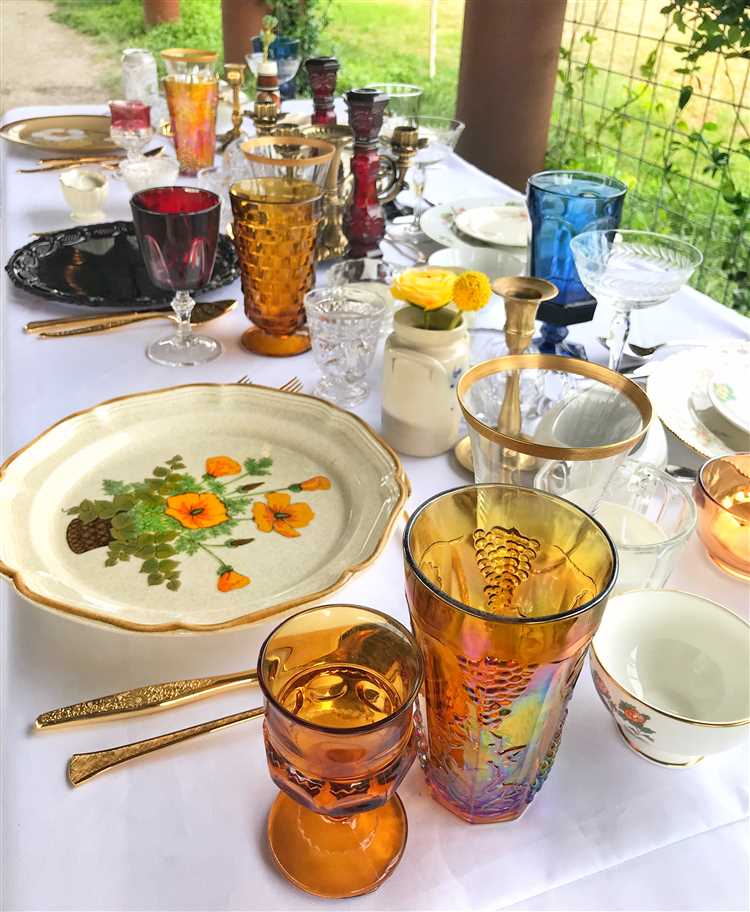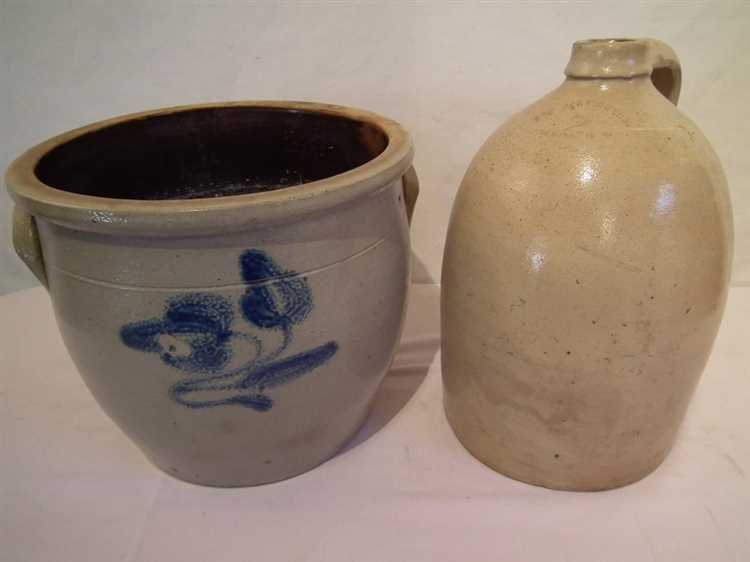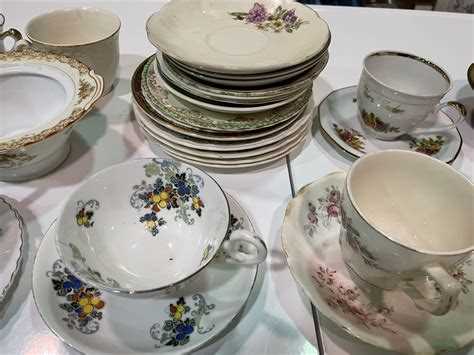When it comes to choosing the right tableware for your dining room, there are many options to consider. Two popular choices are china and stoneware. Both materials have their own unique qualities that make them suitable for different needs and preferences. In this article, we will explore the differences between china and stoneware, and help you decide which is better for your tableware collection.
China:
China, also known as porcelain, is a type of ceramic that is made from a mixture of clay, kaolin, and feldspar. It is known for its delicate and translucent appearance, as well as its durability. China is typically fired at a high temperature, which makes it resistant to chipping and cracking. It also has a smooth surface that is easy to clean and maintain. Additionally, china is often decorated with intricate patterns or hand-painted designs, making it an elegant and sophisticated choice for formal occasions.
Stoneware:
Stoneware, on the other hand, is a type of ceramic that is made from a combination of clay and various minerals. It is fired at a lower temperature than china, which gives it a more rustic and earthy look. Stoneware is known for its strength and durability, making it suitable for everyday use. It has a slightly rougher surface compared to china, which can make it more resistant to scratches and stains. Stoneware is also available in a wide range of colors and finishes, including matte and glazed, allowing for more versatility in design and style.
Which is Better?
The choice between china and stoneware ultimately depends on your individual needs and preferences. If you are looking for tableware that is elegant, delicate, and perfect for special occasions, china may be the better choice. However, if you value durability, versatility, and a more rustic aesthetic, stoneware may be the better option. It is important to consider factors such as your lifestyle, the frequency of use, and your personal style when making this decision. Ultimately, both china and stoneware can be excellent choices for your tableware collection, as long as they meet your specific requirements.
“In summary, china and stoneware each have their own unique qualities that make them suitable for different needs and preferences. Whether you choose china or stoneware for your tableware, both options can provide beauty and functionality to your dining experience.”
Durability and Longevity
When it comes to durability and longevity, both China and stoneware have their own advantages and disadvantages.
China:
- China is known for its delicate and fine appearance. It is made from porcelain, which is a type of ceramic known for its superior strength and durability.
- China is fired at extremely high temperatures, which makes it resistant to chipping and cracking.
- With proper care, China can last for generations. It is often considered to be a valuable heirloom that can be passed down from one generation to another.
- However, China is more fragile compared to stoneware. It is susceptible to breakage if mishandled or dropped.
Stoneware:
- Stoneware is made from clay that is fired at a high temperature, which makes it dense and durable.
- It is less delicate compared to China and can withstand everyday use, including microwave and dishwasher.
- Stoneware is resistant to thermal shock, meaning it can handle rapid temperature changes without cracking or breaking.
- While stoneware is durable, it may develop small chips or cracks over time due to wear and tear.
Choosing between China and stoneware for your tableware ultimately depends on your personal preferences and needs. If you value the delicate appearance and are willing to handle your tableware with care, China can be a great choice. On the other hand, if you prioritize durability and everyday use, stoneware is a more practical option.
Aesthetic Appeal
When it comes to choosing tableware, the aesthetic appeal is an important factor to consider. Both China and Stoneware offer unique and beautiful designs that can enhance the overall presentation of your dining table.
China:
- China tableware is renowned for its exquisite craftsmanship and delicate designs.
- It often features intricate patterns and motifs that are hand-painted or hand-embossed.
- The smooth and glossy finish of China gives it a luxurious and elegant appearance.
- China tableware is often associated with formal dining occasions and special events.
- The fine details and sophisticated look of China make it a favorite choice for those who appreciate traditional and refined aesthetics.
Stoneware:
- Stoneware offers a more rustic and earthy aesthetic compared to China.
- It is known for its natural and organic look with imperfect edges and glazed finishes.
- Stoneware tableware often features earthy colors and rich textures that add warmth and character to the dining table.
- The casual and relaxed vibe of Stoneware makes it a popular choice for everyday use and informal gatherings.
- Stoneware can easily complement various interior styles, from farmhouse to contemporary.
Ultimately, the choice between China and Stoneware in terms of aesthetic appeal depends on your personal taste and the style you want to achieve in your dining space. Whether you prefer the elegance of China or the rustic charm of Stoneware, both options can add beauty and visual interest to your table.
Price and Affordability
When it comes to price and affordability, there are a few factors to consider when choosing between China and Stoneware for your tableware:
- Material: China is typically made from porcelain or bone china, which are known for their delicate and refined appearance. Stoneware, on the other hand, is made from a porous clay that gives it a more rustic and earthy look. Due to the difference in materials, China is generally more expensive than Stoneware.
- Production Process: The production process for China involves multiple firings at high temperatures, which contributes to its higher cost. Stoneware, on the other hand, is fired at lower temperatures and requires less time and energy, making it a more cost-effective option.
- Durability: China is known for its delicate and fragile nature, requiring careful handling to prevent chips and cracks. Stoneware, on the other hand, is more durable and can withstand everyday use and frequent washing without as much risk of damage. This durability can make stoneware a more cost-effective choice in the long run, as it is less likely to need replacement.
In terms of affordability, stoneware generally offers a more budget-friendly option compared to China. Its lower production costs and higher durability make it a practical choice for those looking for tableware that can withstand the test of time. However, if you are willing to invest in delicate and refined tableware that exudes elegance and sophistication, China may be worth the higher price.
Ultimately, the choice between China and Stoneware will depend on your personal preferences, budget, and how you plan to use and care for your tableware. Consider the factors mentioned above to make an informed decision that aligns with your needs and preferences.
Heat Retention and Thermal Efficiency
One of the key factors to consider when choosing tableware is its heat retention and thermal efficiency. This refers to how well the material can retain heat and distribute it evenly and efficiently.
In terms of heat retention, stoneware is known to be a better option compared to china. The dense and thick nature of stoneware helps it to retain heat for longer periods of time. This means that your food or beverage will stay warm for a longer duration, allowing you to enjoy it at your own pace.
On the other hand, china is not as efficient in retaining heat. It tends to cool down faster, which may result in your food or beverage becoming cold before you finish it.
When it comes to thermal efficiency, both stoneware and china have their own benefits. Stoneware has excellent thermal conductivity, meaning it can distribute heat evenly throughout the material. This ensures that your food or beverage is heated or cooled uniformly.
China, on the other hand, may have slightly lower thermal conductivity compared to stoneware. However, it is still a good choice for tableware as it can still distribute heat relatively well.
Ultimately, the choice between stoneware and china regarding heat retention and thermal efficiency depends on your personal preferences. If you value the ability to keep your food or beverage warm for a longer period of time, stoneware is the way to go. However, if you prioritize other factors or prefer a cooler temperature, china can still serve you well.
Resistance to Scratches and Stains
When it comes to tableware, resistance to scratches and stains is an important factor to consider. Both China and Stoneware have their own characteristics in terms of durability and stain resistance.
- China: China is known for its delicate and smooth surface. It is made of porcelain clay and fired at very high temperatures, resulting in a hard and durable material. China is highly resistant to scratching and staining. Its non-porous surface makes it easy to clean and prevents the absorption of stains. However, it should be noted that China can chip or crack if mishandled or dropped.
- Stoneware: Stoneware, on the other hand, is made of clay fired at slightly lower temperatures compared to China. It has a more rustic and earthy feel with a textured surface. Stoneware is also resistant to scratching and staining, but not as much as China. Its porous surface may absorb some stains over time if not properly maintained. However, stoneware is generally more resistant to chipping and cracking compared to China.
In terms of resistance to scratches and stains, both China and Stoneware are suitable for daily use. It ultimately depends on personal preferences and needs. If you prefer a delicate and elegant surface, China may be the better choice. If you prefer a more rustic and durable option, Stoneware might be more suitable.
| Resistance to Scratches | Resistance to Stains | |
|---|---|---|
| China | High | High |
| Stoneware | Medium-High | Medium |
Versatility and Usability
When it comes to versatility and usability, both china and stoneware have their advantages and considerations. Here are some factors to consider:
- Durability: Stoneware is known for its durability and ability to withstand everyday use. It is thick and less prone to chipping and breaking compared to china. This makes stoneware a great choice for families with young children or for everyday use.
- Variety of Styles: China offers a wide range of styles and designs, making it a popular choice for formal occasions and special events. From intricate patterns to delicate finishes, china can add an elegant touch to any table setting.
- Microwave and Dishwasher Safe: Stoneware is generally microwave and dishwasher safe, which adds to its usability and convenience. China, on the other hand, may require special care and handwashing to preserve delicate decorations and finishes.
- Heat Retention: Stoneware has excellent heat retention properties, making it ideal for keeping food warm for longer periods. China, on the other hand, may not retain heat as well and could cause the food to cool down more quickly.
- Scratch Resistance: China is more prone to scratching compared to stoneware. If you frequently use utensils with sharper edges or have a habit of stacking your tableware, stoneware may be a better choice to avoid visible scratches.
- Price Range: The price range for china and stoneware can vary significantly. Stoneware tends to be more affordable and budget-friendly, while china can be a higher-end investment.
Ultimately, the choice between china and stoneware depends on your personal preferences, dining habits, and the occasion. Both options offer their own unique advantages, so it’s important to consider factors like durability, style, and convenience before making a decision.
Environmental Impact
When considering the environmental impact, both China and stoneware have their own advantages and disadvantages.
- China: The production of china involves the extraction of raw materials such as clay and minerals. This process can have a negative impact on the environment, leading to soil erosion and depletion of natural resources. Additionally, the firing process used to create china requires high temperatures, which can contribute to air pollution and greenhouse gas emissions.
- Stoneware: Stoneware is known for its durability, which means that it has a longer lifespan compared to china. This reduces the need for frequent replacement and therefore reduces waste. Stoneware is also typically made from natural materials, such as clay, which are readily available and have a minimal impact on the environment when extracted responsibly. However, the firing process for stoneware can also contribute to air pollution and greenhouse gas emissions.
When it comes to the disposal of tableware, both china and stoneware can be recycled. However, it’s important to note that the recycling process for stoneware can be more challenging due to its durability and heaviness.
Overall, while both china and stoneware have an environmental impact, choosing stoneware may be a more sustainable option due to its longer lifespan and use of natural materials. However, it’s important to consider the specific production processes and practices of manufacturers in order to fully assess their environmental impact.
Care and Maintenance
Proper care and maintenance is essential to keep your tableware looking its best and to prolong its lifespan whether it’s made of china or stoneware. Here are some tips to help you take care of your tableware:
1. Washing
Always follow the manufacturer’s instructions for washing your china or stoneware. Most tableware can be safely washed in a dishwasher, but delicate china may require hand washing to avoid chips or cracks. Use a mild detergent and avoid abrasive scrubbers or cleaning agents that can scratch the surface.
2. Storing
When storing your tableware, make sure to stack dishes carefully to avoid chipping or breaking. Use felt or other non-abrasive material between each piece to provide cushioning. Avoid stacking too many dishes on top of each other to prevent excessive weight and pressure that can lead to damage.
3. Handling
Handle your tableware with care to avoid accidents or damage. Avoid gripping plates or bowls too tightly and be mindful of sharp edges. When serving hot food, always use pot holders or oven mitts to avoid burning yourself or damaging the tableware.
4. Temperature
Avoid exposing your tableware to extreme temperature changes. Sudden changes in temperature can cause ceramics to crack or break. For example, do not transfer a hot dish directly from the oven to a cold countertop.
5. Microwaving and Oven Use
Check the manufacturer’s guidelines to determine if your tableware is microwave or oven safe. Some stoneware and china may not be suitable for use in the microwave or oven. Using incompatible tableware in these appliances can cause damage and potentially hazardous situations.
6. Chipping and Scratches
Inspect your tableware regularly for any signs of chipping or scratches. If you notice any damage, discontinue use of the affected piece. Chipped or scratched tableware can harbor bacteria and be more prone to further damage.
By following these care and maintenance tips, you can ensure that your tableware, whether it’s china or stoneware, remains in excellent condition for years to come.
FAQ:
What are the advantages of using stoneware for tableware?
Stoneware has several advantages for tableware. Firstly, it is known for its durability and strength, making it resistant to chipping and breaking. Secondly, stoneware has a natural and rustic appearance, which adds an aesthetic appeal to the table setting. Additionally, stoneware retains heat well, keeping the food warm for longer periods. Lastly, stoneware is dishwasher safe and easy to clean.
Why is china considered superior to stoneware for tableware?
China is often considered superior to stoneware for tableware due to its delicacy and elegance. It is made of fine porcelain materials, which give it a translucent and refined appearance. China is also known for its high-quality craftsmanship and intricate designs. Moreover, china has a smooth and non-porous surface, which makes it resistant to stains and odors. Despite being fragile, china is often preferred for formal occasions and special events.
Can stoneware be used in a microwave?
Yes, stoneware is generally safe to use in a microwave. Its ability to retain heat makes it suitable for reheating food or cooking certain dishes in the microwave. However, it is important to check the manufacturer’s guidelines for specific instructions on whether the stoneware is microwave-safe. Some stoneware may have metallic accents or glazes that can cause the dish to overheat or even damage the microwave.
Is china more expensive than stoneware?
Yes, china is generally more expensive than stoneware. This is due to the higher quality materials used in making china, such as fine porcelain and bone china. The intricate designs and craftsmanship also contribute to the higher price. On the other hand, stoneware is often more affordable while still offering durability and functionality. The price difference between china and stoneware can vary based on the brand, design, and the manufacturing process.


